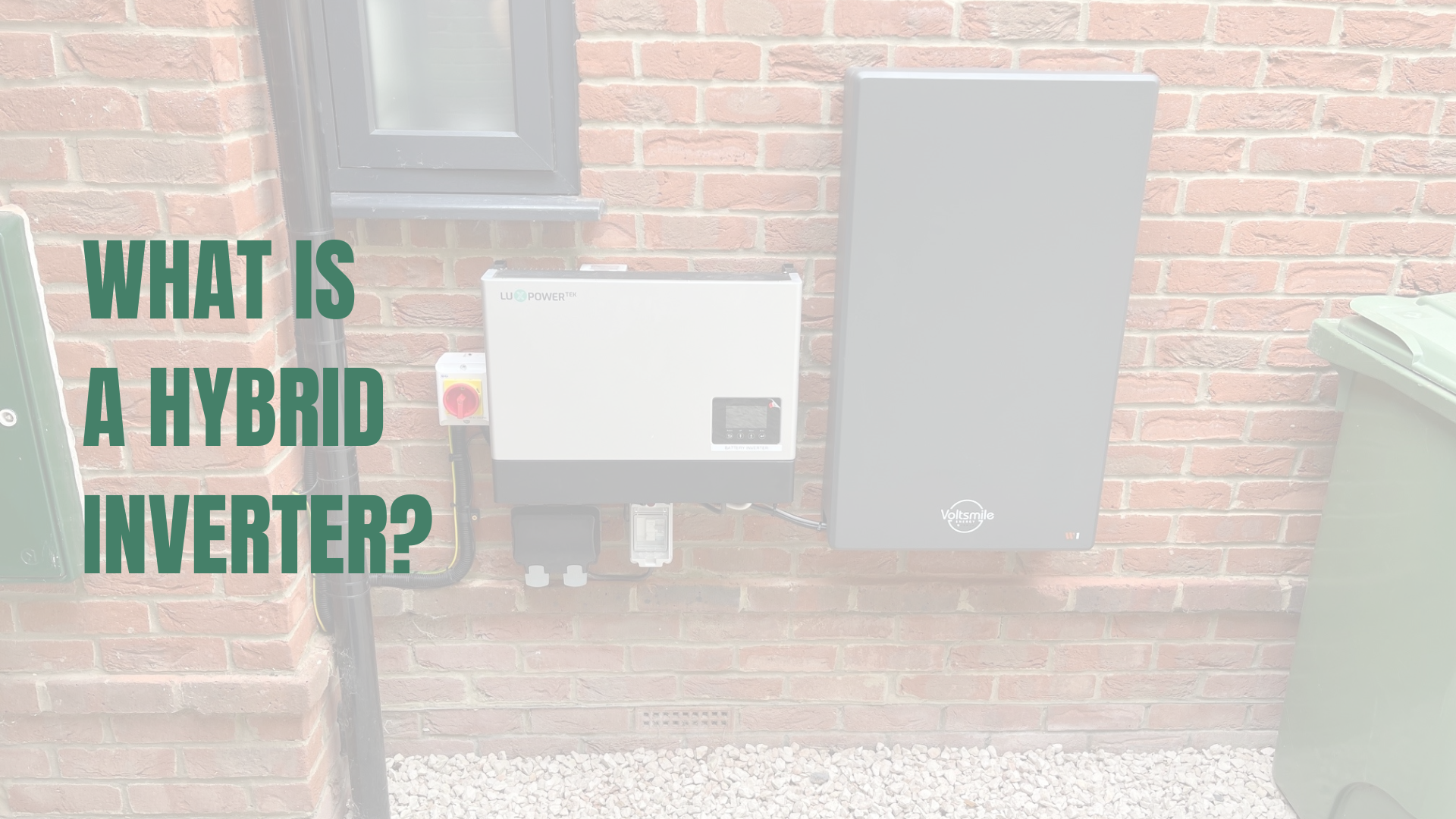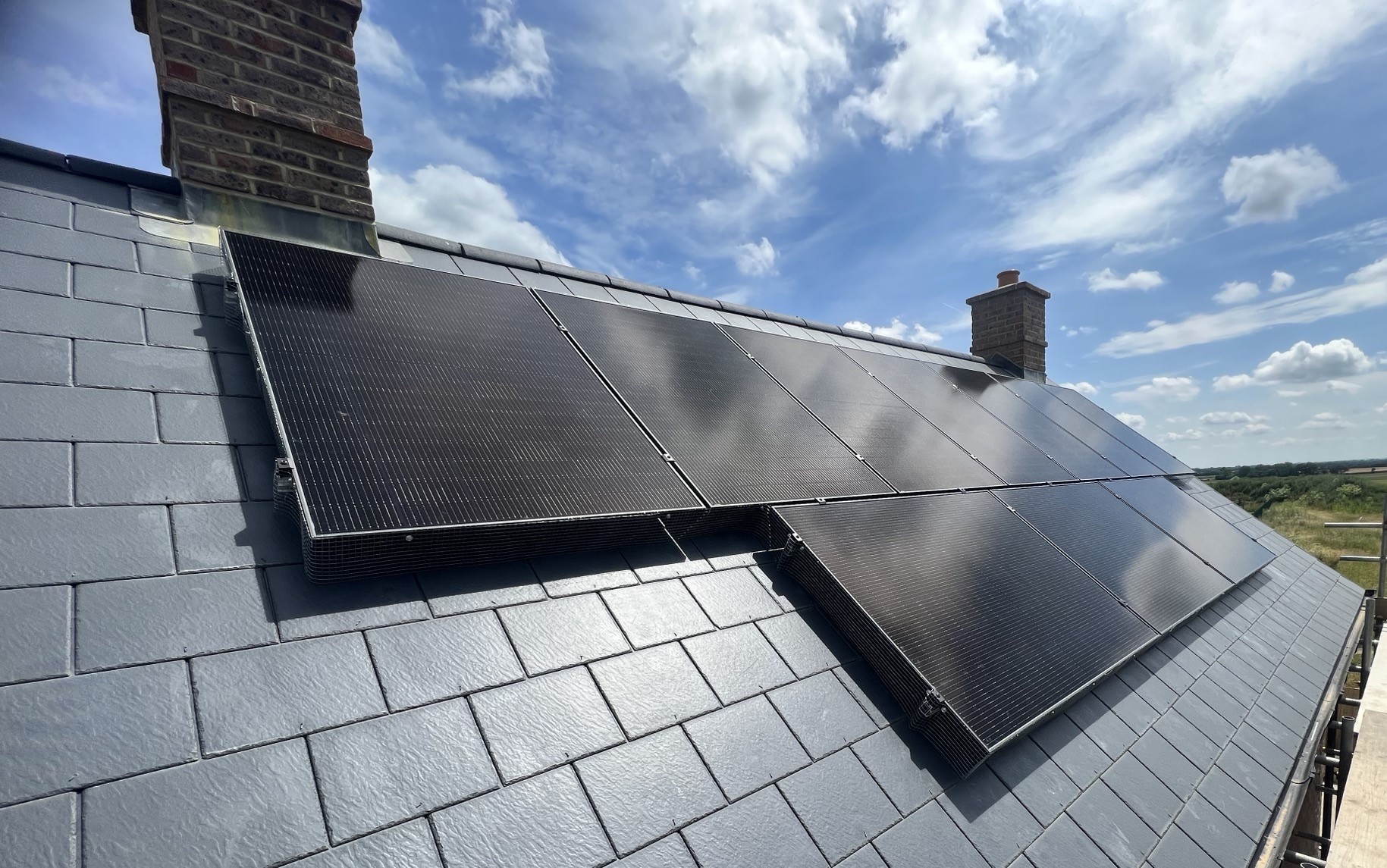If you’re exploring solar panel installation options for your home or business, you may have come across the term hybrid inverter. What exactly is a hybrid inverter and how does it fit into your solar PV system?
At SolarTherm UK, your trusted solar installer, we’re here to break it down into simple terms. This article will investigate what an inverter is and how a hybrid inverter differs.
What is a Solar Inverter?
A solar inverter is a key component of your solar PV system, it’s the brains of the set up. The solar inverter converts the DC (direct current) electricity your solar panels produce into usable AC (alternating current) electricity to power your home or business. Without a solar inverter you wouldn’t be able to use the electricity your solar panels generate.
Your solar inverter is also used to communicate with the National Grid, providing real-time data on your solar system’s performance, generation and export.
Types of Solar Inverters
There are four main types of solar inverter used for solar panel installations. String inverters, micro-inverters, hybrid inverters and power optimisers. Traditional systems use a string inverter which will require a separate inverter to connect battery storage, but a hybrid inverter combines both functions into a single unit to simplify your solar system.
For more information about string inverters, micro-inverters and power optimisers check out our dedicated article here.
What is a Hybrid Inverter?
A hybrid inverter integrates the functions of a standard solar inverter and a battery inverter. Here’s how it works:
- Converts DC electricity from the solar panels into AC electricity for use
- Stores excess DC electricity in a connected battery or feeds it back into the grid
- Converts stored DC electricity into usable AC electricity when needed
With a hybrid inverter, your solar panel system becomes more efficient, providing bother energy conversion and storage in one device.
Benefits of Hybrid Inverters
Investing in a hybrid inverter, such as the WonderLux 5000 Hybrid inverter with a professional solar installer like SolarTherm UK brings several advantages.
- Energy resilience – hybrid inverters can help facilitate power backup during grid failures and power outages, keeping your home or business running smoothly.
- Centralised monitoring – as all solar energy flows through one system, you only need one platform to track your solar system and battery performance.
- Optimisation of solar power – most households generate excess solar energy during the day, a hybrid inverter stores this in solar batteries for use in the evenings or on low generation days.
- Cost-effective installation – a hybrid inverter from the outset eliminates the need for a separate battery inverter, saving on installation costs and simplifying your solar panel system setup.
- Low maintenance – hybrid inverters require minimal maintenance, just regular monitoring, as they have very few moving parts.
Considerations Before Installing a Hybrid Inverter
While there are many advantages of installing a hybrid inverter, they may not suit every solar PV installation. The upfront costs of switching from a traditional string inverter to a hybrid inverter can be higher as they involve additional wiring and higher initial costs. The other disadvantage of a hybrid inverter is that you are more limited to what solar battery you can install, many modern solar battery storage systems now have built-in inverters which could limit compatibility if a hybrid inverter is installed.
Speak to a Trusted Solar Installer
At SolarTherm UK, we specialise in solar panel installation and solar PV system design. Our expert team can guide you on whether a hybrid inverter is the right solution for your energy needs.
Contact SolarTherm UK today for a free bespoke quote, tailored to your property, usage and future energy needs. No hard sell, just honest, expert advice.
At SolarTherm UK, we do the research so you don’t have to.





